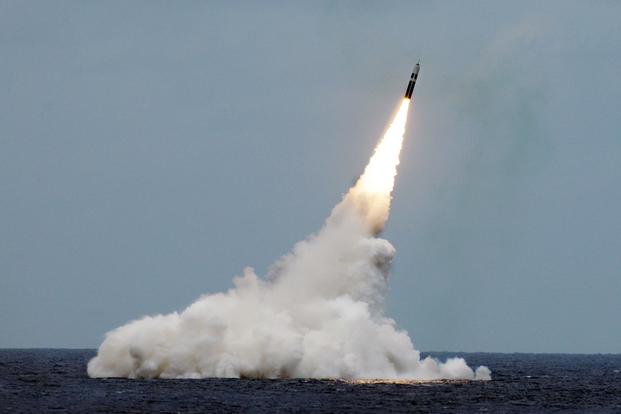The Navy has put development of hypersonic weapons on its acquisition wish list even as Russian President Vladimir Putin boasted this week of a successful test and planned deployment in 2019 of "invincible" nuclear-armed versions that can fly at more than 20 times the speed of sound.
Under his plan, released Dec. 17, Chief of Naval Operations Adm. John Richardson listed the Navy's intention to "develop and field an offensive hypersonic weapon by 2025" as a top priority.
The Air Force also has put a priority on hypersonics, reflecting the increasing concerns of the Pentagon that Russia and China have taken the lead on a technology that potentially poses the threat of making existing missile defense systems obsolete.
In April, the Air Force awarded a contract to develop a prototype hypersonic cruise missile, or the Hypersonic Conventional Strike Weapon.
Officials have been candid in acknowledging that the U.S. is likely playing catch-up to Russia and China in the development of hypersonics.
In a roundtable discussion with reporters last January, Air Force Gen. Paul Selva, vice chairman of the Joint Chiefs of Staff, said, "We have lost our technical advantage in hypersonics," but "we haven't lost the hypersonics fight."
The Defense Advanced Research Projects Agency is working with the Air Force on the joint Tactical Boost Glide (TBG) program to perfect hypersonic weaponry.
In the boost-glide system, a rocket accelerates the payload to speeds many times the speed of sound. The payload then separates from the rocket and glides unpowered to the target.
Putin has boasted that the Russian hypersonics weapon, in addition to its high speeds, which limit the warning time for defenses, can also change directions in flight, thereby thwarting tracking.
On Wednesday, Putin oversaw the test launch of the "Avangard" hypersonics weapon from a silo in the Dombarovsky missile base in the southern Ural Mountains.
Only the missile launch was shown by Russian state television, but Russian officials claimed that the hypersonic payload successfully hit a target on the Kura shooting range on the Kamchatka Peninsula in eastern Russia, more than 3,000 miles away.
Deputy Prime Minister Yury Borisov told Russian state television that the test's success showed that Russia now has a hypersonic weapon that "essentially makes missile defenses useless."
Putin and other Russian officials increasingly have claimed that new weapons in Russia's arsenal can easily get past U.S. defenses, particularly as the U.S. threatens to withdraw from the 1987 Intermediate-range Nuclear Forces Treaty.
In his State of the Union speech last March, Putin claimed that Russia has a nuclear-propelled underwater drone, nuclear cruise missile and high-powered combat laser. Putin said the "hypersonic" nuclear cruise missile could be launched from a bomber and evade any existing defenses.
The hypersonic cruise missile "flies at a speed 20 times the speed of sound," he said, "and it can maneuver thousands of kilometers up and down and right to left. It's like science fiction."
The Navy's push for a hypersonic weapon was included in Richardson's "Design 2.0" plan, intended to "guide our behaviors and investments this year and in the years to come." He said that specifics "will be reflected in our annual budget documents."
The Design 2.0 plan reflects the concerns of the 2018 National Defense Strategy in stating that "China and Russia are deploying all elements of their national power to achieve their global ambitions. In addition, our competitors have been studying our methods over the past 20 years.
In many cases, they are gaining a competitive advantage and exploiting our vulnerabilities."
To counter the threat, Richardson listed a number of ASAP capabilities and programs that the Navy needs to acquire or put in operation more quickly.
Among those priorities are acquiring the Columbia-class replacements for the Ohio-class ballistic submarines; awarding the Future Frigate contract by 2020; building up the 2nd Fleet to full operational capability in 2019; and awarding contracts by 2025 for a new family of underwater unmanned vehicles.
-- Richard Sisk can be reached at Richard.Sisk@Military.com.










